
Richard Burton Matheson was an American author and screenwriter, primarily in the fantasy, horror, and science fiction genres.

Stanley Grauman Weinbaum was an American science fiction writer. His first story, "A Martian Odyssey", was published to great acclaim in July 1934; the alien Tweel was arguably the first character to satisfy John W. Campbell's challenge: "Write me a creature who thinks as well as a man, or better than a man, but not like a man." Weinbaum wrote more short stories and a few novels, but died from lung cancer less than a year and a half later.
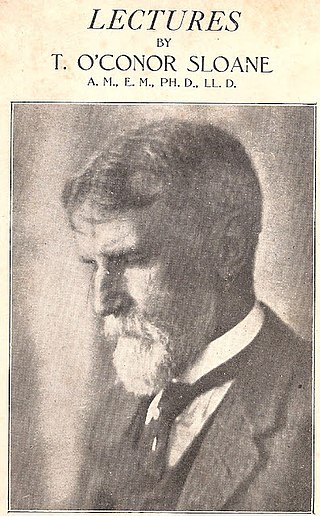
Thomas O'Conor Sloane was an American scientist, inventor, author, editor, educator, and linguist, perhaps best known for writing The Standard Electrical Dictionary and as the editor of Scientific American, from 1886 to 1896 and the first science fiction magazine, Amazing Stories, from 1929 to 1938.

Manly Wade Wellman was an American writer. While his science fiction and fantasy stories appeared in such pulps as Astounding Stories, Startling Stories, Unknown and Strange Stories, Wellman is best remembered as one of the most popular contributors to the legendary Weird Tales and for his fantasy and horror stories set in the Appalachian Mountains, which draw on the native folklore of that region. Karl Edward Wagner referred to him as "the dean of fantasy writers." Wellman also wrote in a wide variety of other genres, including historical fiction, detective fiction, western fiction, juvenile fiction, and non-fiction.

Howard Browne was an American science fiction editor and mystery writer. He also wrote for several television series and films. Some of his work appeared over the pseudonyms John Evans, Alexander Blade, Lawrence Chandler, Ivar Jorgensen, and Lee Francis.
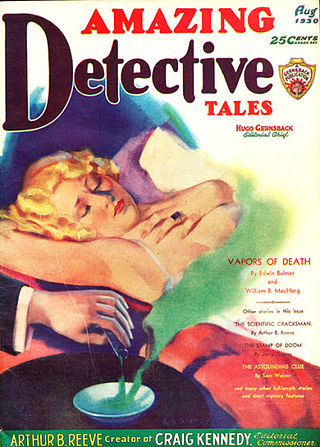
Earle K. Bergey was an American artist and illustrator who painted cover art for thousands of pulp fiction magazines and paperback books. One of the most prolific pulp fiction artists of the 20th century, Bergey is recognized for creating, at the height of his career in 1948, the iconic cover of Anita Loos's Gentlemen Prefer Blondes (1925) for Popular Library.

"From Beyond" is a horror genre short story by American writer H. P. Lovecraft. It was written in 1920 and was first published in The Fantasy Fan in June 1934.
Richard Christian Matheson is an American writer of horror fiction and screenplays, the son of fiction writer and screenwriter Richard Matheson. He is the author of over 100 short stories of psychological horror and magic realism which are gathered in over 150 major anthologies and in his critically hailed hardcover short story collections Scars and Other Distinguishing Marks, Amazon #1 bestseller Dystopia, and Zoopraxis. He is the author of the suspense novel Created By. He also authored a magical realism novella set in Hollywood titled The Ritual of Illusion, and was the editor of the commemorative book Stephen King's Battleground. Matheson also adapted the short story which was made into an iconic episode of the TNT series Nightmares & Dreamscapes: From the Stories of Stephen King and won two Emmys.

"Cool Air" is a short story by the American horror fiction writer H. P. Lovecraft, written in March 1926 and published in the March 1928 issue of Tales of Magic and Mystery.

Henry Slesar was an American author and playwright. He is famous for his use of irony and twist endings. After reading Slesar's "M Is for the Many" in Ellery Queen's Mystery Magazine, Alfred Hitchcock bought it for adaptation and they began many successful collaborations. Slesar wrote hundreds of scripts for television series and soap operas, leading TV Guide to call him "the writer with the largest audience in America."
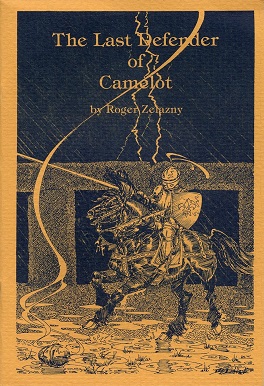
"The Last Defender of Camelot" is a fantasy short story by American writer Roger Zelazny, first published in the Summer 1979 issue of Asimov's SF Adventure Magazine. It was subsequently published as a chapbook by Underwood/Miller for the May 23, 1980 V-Con 8 where Zelazny was guest of honor. It is currently published as a hardcover, paperback, and digital e-book by Amber LTD. The story was also the basis of a 1986 episode of the television series The Twilight Zone.
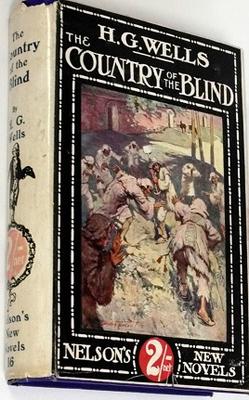
The Country of the Blind and Other Stories is a collection of thirty-three fantasy and science fiction short stories written by the English author H. G. Wells between 1894 and 1909. It was first published by Thomas Nelson and Sons in 1911. All the stories had first been published in various weekly and monthly periodicals. Twenty-seven of the stories had also been previously published in five earlier story collections by Wells.

H. G. Wells was a prolific writer of both fiction and non-fiction. His writing career spanned more than sixty years, and his early science fiction novels earned him the title of "The Father of Science Fiction".

George Allan England was an American writer and explorer, best known for his speculative and science fiction. He attended Harvard University and later in life unsuccessfully ran for Governor of Maine. England was a socialist and many of his works have socialist themes.
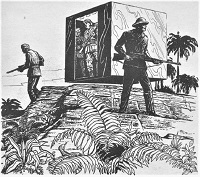
"A Gun for Dinosaur" is a classic time travel science fiction story by American writer L. Sprague de Camp as part of his Rivers of Time series. It tells the story of four men who travel into the past to hunt dinosaurs.
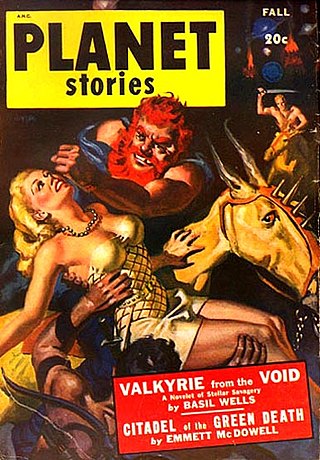
"Mars Is Heaven!" is a science fiction short story by American writer Ray Bradbury, originally published in 1948 in Planet Stories. "Mars Is Heaven!" was among the stories selected in 1970 by the Science Fiction Writers of America as one of the best science fiction short stories published before the creation of the Nebula Awards. As such, it was published in The Science Fiction Hall of Fame Volume One, 1929–1964. It also appears as the sixth chapter of The Martian Chronicles, revised as "The Third Expedition."
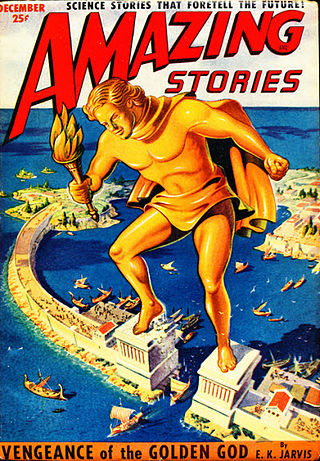
".. . Divided We Fall" is a science fiction short story by American writer Raymond F. Jones, originally published in Amazing Stories in 1950. It was rewritten as a novel called Syn.
"The Truth About Pyecraft" is a British fantasy-comedy short story by H. G. Wells. It was originally published in The Strand Magazine, and then included in the Twelve Stories and a Dream story collection, in 1903. It has been frequently reprinted.
The Infinite Worlds of H. G. Wells is a four-hour television miniseries conceived by Nick Willing and released in 2001 by the Hallmark Channel. It is based on a number of short stories by H. G. Wells, and in some territories was titled The Scientist.
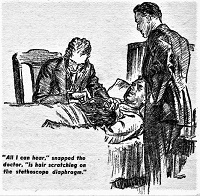
"Hyperpilosity" is a science fiction story by American writer L. Sprague de Camp. It was first published in the magazine Astounding Stories for April, 1938, and first appeared in book form in the de Camp collection The Wheels of If and Other Science Fiction (Shasta, 1949; It later appeared in the anthologies Omnibus of Science Fiction, Science Fiction of the Thirties, The Edward De Bono Science Fiction Collection, and The Road to Science Fiction #2: From Wells to Heinlein, as well as the magazine Fantastic Story Magazine and the de Camp collection The Best of L. Sprague de Camp. In 2014 the story was shortlisted for the Retro Hugo Award for Best Short Story.

















